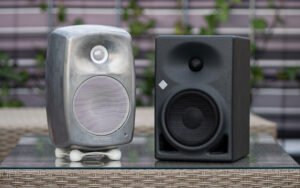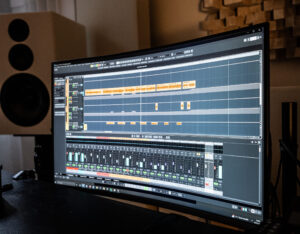A great recording is mainly dependent on three factors. Firstly, the singer herself, has to feel comfortable and deliver a great take. Technically this is not part of the recording quality, but the studio environment and understanding between producer and artist play a crucial role. Secondly, the recording room should sound pleasently dry, with no strong reflections or echos that could be audible on the take. Especially after applying compression, artifacts from bad recording rooms become more apparent. Lastly, a quality recording chain is needed to capture the performance. The combination of microphone, preamp and converter create a sound signature that will prevail no matter what mixing technique is used.
Luckily, recording equipment has become more and more affordable due to the progress in manufacturing technology. Generally speaking, while the top-end of music equipment remained expensive and even in terms of analog equipment largely unchanged since back in the days, the quality that cheaper consumer-level products offer for the price has drastically improved year over year since the digital revolution. This offers artists the incredible opportunity, to record professional sounding vocals with less than 1000 Euros in equipment and then collaborate with bigger studios, to achieve a sound that is comparable to expensive productions.
There is an endless list of possible options if you want to get into recording. We are happy to help you if you are in doubt of what you should buy. As far as our own recording chain goes, we bet on a mix of classic and modern components. Our vocal mic of choice is a 1986 Neumann U87, which paired with a Neve 1073 preamp delivers the vocal sound pretty much everybody on the planet has heard before. Our alternatives are the amazing Advanced Audio CM800T, which is a tube microphone reminicent of the airy sounding Sony C-800G, as well as the API 512c Preamp, a different flavor with a big and silky sound to it. We love compressing during tracking because the fully analog processing of the signal before the first conversion happens delivers a rich and organic sound. Compressor of choice: Empirical Labs Distressor.
Converter technology has made many leaps over the past two decades. They became much cheaper to make and the average specs improved drastically. If you are using any well-regarded modern-day recording interface you probably don’t have to worry too much about converter quality. To make the most of our signal chain however, we could not allow any compromises. Our converter of choice is the RME ADI-2 PRO FS R Black Edition. It is an amazing sounding and versatile piece of tech, and an improvement in clarity over the RME Fireface you have to hear to understand.
Note one thing: All of this tech is useless without the knowledge and skill of the producer. I specifically said in my adverts “we love Hiphop, Rap and Pop Music” because that is the music I came up making. Many Big Studios in Austria have all the equipment you could dream of, but their producers don’t understand what it takes to make a Rap-record. I don’t blame them, because they would have been the first to specialize on Hiphop music in Austria running a commercial studio. Since I’ve listened to Hiphop for the past 20 years understanding the sound comes more easily to me. Does that mean we only record rap? Hell no. I will even mix your rock band, but I can not record your drums, because there’s no space for that.


